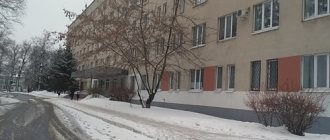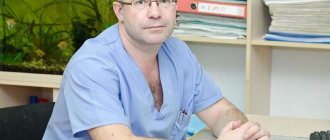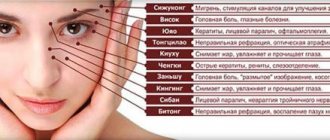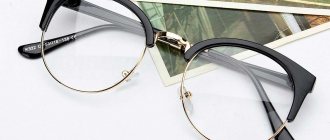Septoplasty
This surgical operation corrects a deformed nasal septum and removes growths from the cartilaginous and bony septum. Often this operation is combined with rhinoplasty, which makes it possible to correct the shape of the nose in parallel with solving the problem of difficulty breathing.
Indications and contraindications for septoplasty
Congenital or acquired pathologies cause deformation changes in the nasal septum. Most often these are mechanical injuries to the nose, polyps and tumors, and tissue development disorders. Curvatures and displacements of the septum manifest themselves in the form of deformation of cartilage tissue or the formation of a ridge, a bone spike, or a combination of these. This, in turn, leads to the development of inflammatory processes in the nasal sinuses, loss of smell, discomfort when breathing, and due to insufficient oxygen supply, memory loss and decreased performance.
Indications for septoplasty are:
- disruption of the nasal breathing process;
- chronic runny nose;
- frequently recurring nosebleeds;
- snoring during sleep;
- asymmetrical nose shape.
The presence of diabetes, oncology, acute infections, exacerbation of chronic ailments, low blood clotting are factors in which septoplasty is contraindicated.
Methods of performing the operation
Correction of defects occurs in several ways.
- The classic or open method of nasal septum correction is used to eliminate severe deficiencies. If it is used, incisions are made in the columella area using a scalpel to gain access to the tissue. Depending on the individual characteristics of the patient, the surgeon performs excision and alignment of the cartilage and puts it in place. Currently, this method of operation is used in exceptional cases, since it is traumatic.
- The laser method involves the use of specialized equipment. During the operation, which usually lasts about half an hour, a laser beam cuts tissue and corrects the nasal cavity while maintaining the natural integrity of the nasal septum. The advantages of such a procedure include:
- the ability to avoid postoperative hospital treatment;
- reducing the risk of tissue infection;
- prevention of nosebleeds during the recovery period.
- The endoscopic method of surgical intervention involves inserting an endoscope with a camera into the nasal passages, transmitting an image to a monitor, and performing resection of the nasal septum. The duration of the operation depends on the complexity of the specific situation and is 50-120 minutes.
Less popular methods of correcting defects in the nasal cavity include the radiosurgical method, which uses a radioknife, as well as the ultrasound method, which involves the use of ultrasound equipment.
Restrictions after surgery
The recovery period lasts about 3 months. It is necessary to visit an ENT specialist once a week; regular examination will prevent possible complications. To speed up the healing process, it is important for the patient to follow medical recommendations:
- the patient needs to rinse his nose with sea salt preparations for the first week, such as Aqualor, Humer, Dolphin;
- after washing, you need to remove blood clots and crusts yourself using a cotton swab, make turundas soaked in sea buckthorn or peach oil, to soften you first need to treat the nasal sinuses with saline solution;
- Vasoconstrictor drops may also be prescribed; respiratory functions will recover on their own, but patients can use similar medications to relieve uncomfortable symptoms;
- You can’t blow your nose or hold your head down for a long time;
- to speed up healing, 10 days after surgery, the doctor usually prescribes Nasonex spray, which has an anti-inflammatory effect;
- it is necessary to give up sports and lead a gentle lifestyle;
- It is prohibited for 2 weeks to smoke, drink alcohol, hot, spicy, salty foods that cause chewing difficulties;
- you cannot visit saunas, steam baths, solariums, carry out procedures that involve heating tissues, or stay in the sun for a long time;
- You cannot wear glasses; it is advisable to choose clothes with buttons or zippers to prevent injury to the nose;
- sleep exclusively on your back, monitor your health, and do not expose yourself to the risks of colds and infectious diseases.
Vasotomy
A surgical operation during which the volume of blood vessels is reduced. Depending on the extent of the damage, surgery may be performed on one or both turbinates.
Indications and contraindications for vasotomy
The indication for the surgical procedure of vasotomy is impaired nasal breathing function due to an enlarged turbinate. This is a pathology in which the nasal mucosa is greatly thickened and swells at the slightest irritation. Difficulty breathing in this case is the result of vasomotor, medicinal or chronic rhinitis, which is not amenable to conservative treatment, as well as the presence of endocrine diseases that cause hypertrophy of the nasal cavities. Simply put, the mucous membrane swells, the nasal passages narrow, and the passage of air becomes difficult.
Contraindications to their implementation are acute infections, including purulent processes in the ENT organs, exacerbation of chronic diseases.
Methods of performing the operation
Currently, reducing the volume of the nasal concha is carried out in several ways. The choice of method is made by an otolaryngologist, based on the nature of the disease, age and individual characteristics of the patient.
- Instrumental is a classic method of eliminating hypertrophy, which involves exfoliation of the mucosa and elimination of vascular bundles. Damaged vessels do not recover over time, which serves as a reliable prevention of relapses. The duration of the procedure is about 15 minutes.
- Turbinoplasty is the most effective method used to solve complex cases. It involves removing part of the turbinate through a small incision, while preserving the mucous membrane. The disadvantage of turbinoplasty is that it is traumatic and prone to complications.
- The laser method is an effective and low-traumatic method in which a light guide is inserted into the nasal cavity, the beam of which evaporates tissue.
- Radio wave disintegration is a modern effective method of eliminating tumors, which involves introducing a radio wave-producing probe under the mucous membrane. As a result of vibrations of radio waves, coagulation of blood vessels occurs, leading to normalization of the size of the nasal passages.
- Cryodestruction is a procedure in which the mucous membrane is treated with a cryoprobe, which destroys cell membranes using low temperatures. This causes thrombosis of capillary vessels, their bleeding and elimination of swelling.
- Coblation is a method of radio wave surgery that involves exposing tissue to a field of cold plasma. As a result of this effect, molecular bonds are broken, blood vessels are destroyed, and the nasal turbinates acquire a normal size.
Minimally invasive operations are an alternative and more modern method of performing vasotomy
Among other modern low-traumatic methods of performing vasotomy, the following are recognized as highly effective: ultrasonic disintegration (USD), vacuum resection.
How is rehabilitation going?
With vasotomy, the patient can leave the clinic 2 hours after the operation. The operation is bloodless, packing is not required after the intervention.
Recovery after septoplasty lasts about 3 months and is divided into 2 periods.
During the first, postoperative, the patient is placed with cotton-gauze turundas or silicone splints in the nasal passages, which allows the normal position of the nasal septum to be fixed and bleeding to be prevented. During this period, it is recommended to observe a relaxed bed rest. Due to natural swelling and tampons in the nose, nasal breathing is impossible during this period, and therefore the patient has to breathe through the mouth, which causes the development of:
- headaches or dizziness;
- drying of the oral mucosa and cracking of the lips;
- swelling of the nasopharynx;
- increased blood pressure.
Due to pain after vasotomy and septoplasty, in most cases the patient is prescribed painkillers
On the 3-4th day, the turundas are removed, and from this moment the second stage of recovery begins. In the first week, the nasal cavity should be moistened every 3 hours, using saline and special moisturizing sprays, apply ointments, remove blood clots and crusts. On the 10th day, if the patient’s work does not involve physical labor, he can go to work. The swelling of the nose that appears after surgery usually goes away within 3 weeks, during which time the ability for normal nasal breathing is completely restored. The function of smell that has not recovered within 2 months is considered a complication, the treatment of which will require several months. Other common complications are the development of inflammatory processes, bleeding, and septal perforation.
During the recovery period both after septoplasty and after vasotomy, it is important to observe personal hygiene and medical recommendations. Moreover, in the first 2 weeks after surgery it is prohibited:
- carrying out procedures related to visiting a bathhouse or solarium;
- physical activity, and primarily bending;
- wearing glasses;
- eating spicy, hot or carbonated foods;
- sleeping on your side or stomach.
During the first year after septoplasty, the use of vasoconstrictors is strictly prohibited. The only exceptions are cases of special medical appointment, provided there are no complications and 3 months have passed since the operation.
Postoperative period
The rehabilitation process includes 3 stages - postoperative, restorative, final. The first lasts 2 weeks, the rehabilitation process is carried out under the supervision of a doctor. Recovery takes about 3 months, the patient is at home. After healing is complete, you can lead a full life, the results last a lifetime. There are no scars left, since the incisions are located on the mucous membranes from the inside.
Postoperative stage:
- The patient is in the hospital for 2–3 days. Medical staff monitors the condition and provides assistance if complications arise.
- Tubes and tampons are inserted into the nasal passages and secured with a bandage; the patient feels thirsty and can only breathe through the mouth. For the first hours after surgery, you should not drink; you can only rinse your mouth or moisturize your lips with water. Then you can drink without limitation up to 3 liters of clean, non-carbonated, non-hot water.
- Every 2 hours, the tubes are washed with saline solution or Aqualor, Dolphin to remove blood clots.
- During the first days, walking and intense physical activity are not advisable.
- Only salty, spicy, hot dishes that cause chewing difficulties are excluded from the menu.
- For painful sensations, sleep disturbances associated with difficulty breathing, the doctor may prescribe painkillers and sedatives.
- To prevent the occurrence of the inflammatory process, antibacterial therapy is carried out; for treatment, the patient is usually prescribed a penicillin group.
- On the third day, the tampons are removed, the splints and plates are removed by the doctor after 2 weeks. There is no need to remove sutures, as biodegradable threads are used.
- The crusts are removed by the doctor; after discharge, the patient carefully softens them with Vaseline or peach oil and removes them with a cotton swab.
- After discharge, the patient needs to periodically visit an otolaryngologist for 2–3 weeks to monitor the healing process , as well as for hygienic procedures of the nasal cavity. If it gets worse, your condition changes dramatically, you need to consult a doctor.
Combined septoplasty and vasotomy
A complex operation - septoplasty with vasotomy - is performed in cases where a deviated nasal septum is accompanied by swelling of the nasal passages. During this procedure, the surgeon, using an ultrasonic scalpel, makes the cartilage plate smooth and also partially dissects the vessels of the mucous membrane, making them thinner and reducing their sensitivity.
A successful operation ensures normalization of the respiratory process. During its implementation, the surgeon has the opportunity to correct imperfections in the shape of the nose, making it aesthetic and attractive. A harmonious combination of beauty and health is the result of a high-quality operation.
Useful videos
Septoplasty is the treatment of a deviated nasal septum.
Modern medicine has specialized technologies that allow the patient to avoid discomfort after septoplasty and breathe through the nose.
Gadzhiev Kamran Rafikovich
The most common pathology of the ENT organs is a deviated nasal septum. No one thinks that even the slightest curvature can lead to serious diseases such as sinusitis and nasal polyps. Why is this happening? When the ENT organs are healthy, only clean and warm air enters the lower respiratory tract, since it is warmed and disinfected in the nasal cavity. With a deviated nasal septum, all of the above functions are disrupted due to the fact that the air stream hits the curvature of the septum.








